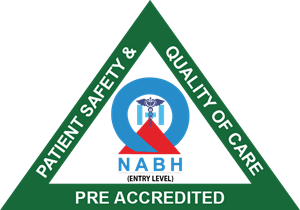What is Pediatric Ophthalmology?
Pediatric Ophthalmology focuses on the eye health of infants, children, and adolescents. Since children’s vision is still developing, early intervention can prevent long-term visual impairment and support their academic and social development. Common conditions treated under pediatric ophthalmology include:
- Refractive Errors (Myopia, Hyperopia, and Astigmatism)
- Amblyopia (Lazy Eye)
- Strabismus (Crossed Eyes)
- Congenital Cataracts
- Pediatric Glaucoma
- Blocked Tear Ducts
- Genetic and Neurological Eye Disorders
Why Choose Pediatric Ophthalmology?
- Early Detection and Treatment – Identifying eye problems early can prevent lifelong vision impairment.
- Child-Friendly Approach – Pediatric ophthalmologists use techniques designed to keep children comfortable during exams.
- Advanced Diagnostic Tools – Specialized tests assess vision and detect conditions that may go unnoticed.
- Tailored Treatment Plans – Custom solutions including glasses, vision therapy, or surgical intervention.
- Multidisciplinary Collaboration – Working with pediatricians and neurologists to address complex cases.
Common Pediatric Eye Conditions and Treatments
Refractive Errors
Children with blurred vision due to myopia (nearsightedness), hyperopia (farsightedness), or astigmatism may need corrective glasses. Regular eye exams ensure their prescription remains accurate as they grow.
Amblyopia (Lazy Eye)
Amblyopia occurs when one eye is weaker than the other, leading to poor vision development. Treatment options include:
- Patching Therapy – Covering the stronger eye to encourage the weaker eye to function.
- Atropine Eye Drops – Temporarily blurring the stronger eye to strengthen the weaker one.
- Vision Therapy – Exercises designed to improve visual coordination.
Strabismus (Crossed Eyes)
Strabismus is a misalignment of the eyes, which may lead to double vision or lazy eye. Treatments include:
- Eyeglasses or Prisms – Corrective lenses help realign the eyes.
- Eye Muscle Therapy – Strengthening exercises for better eye coordination.
- Surgical Correction – In severe cases, eye muscle surgery may be required.
Congenital Cataracts & Pediatric Glaucoma
These conditions require early intervention to prevent permanent vision loss. Pediatric ophthalmologists perform specialized surgeries to restore vision and prevent complications.
When Should Your Child See a Pediatric Ophthalmologist?
- Newborns with a family history of eye diseases
- Premature infants at risk for Retinopathy of Prematurity (ROP)
- Children experiencing difficulty reading or seeing the board at school
- Kids frequently squinting, rubbing their eyes, or complaining of headaches
- Infants with abnormal eye movements or misaligned eyes
Early check-ups can prevent undiagnosed conditions from worsening and ensure proper visual development.
What to Expect During a Pediatric Eye Exam?
- Vision Assessment – Using child-friendly techniques, such as picture charts instead of letter charts.
- Eye Alignment and Movement Testing – Checking for strabismus and focusing issues.
- Refraction Test – Determining if corrective lenses are needed.
- Dilation Examination – Using drops to widen the pupils for a comprehensive retina evaluation.
- Customized Treatment Plan – Based on the diagnosis, treatment options will be discussed.
Parental Guidance for Healthy Vision
- Encourage outdoor play to reduce the risk of myopia.
- Limit screen time and ensure breaks while using digital devices.
- Provide a balanced diet rich in vitamin A for optimal eye health.
- Ensure proper lighting when reading or doing homework.
- Schedule regular eye check-ups to monitor vision development.
Book Your Child’s Eye Exam Today!
If you suspect any vision issues in your child, don’t wait! Early detection and treatment are key to maintaining healthy eyesight. Contact us today to schedule a consultation at Infinite Vision Care and Laser Centre.


